High Voltage Devices
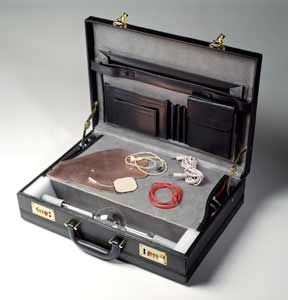
The high voltage type devices provide the new experimenter an economical and relatively simple access to the area of “radiant” Rife technology not requiring a detailed knowledge of RF principles as in the Bare-Rife type devices. In some configurations as the one shown above, it can also be used as a hybrid contact device. This configuration allows for quick and easy storage and transportation while at the same time allowing the experimenter to select the type of frequency generation to suit his needs and pocketbook.
The pulsed high voltage method of excitation does seem to provide a useable level of plasma activity. The level however is nowhere near that level of excitement of the more elaborate Bare-Rife systems. This needs to be clearly understood. Bare-Rife systems however are often out of the reach of many folks for either financial or reasons of complexity. The High Voltage systems are fortunately within the reach of almost anyone as the expensive power and RF components are not used. Specially designed, high performance E-Gas tubes help get the absolute most out of this mode of plasma excitation.
 |
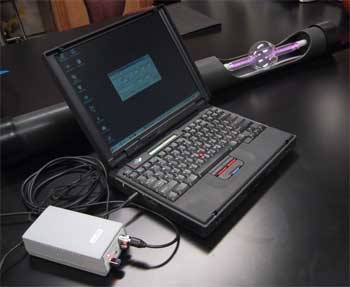 |
Here is shown, a simple and practical high voltage type configuration using a simple laptop for initial programmable frequency generation (Timo Essers’ RifeGEN), RIFEforLIFE’s SquareGENsp+ Square Wave Processor and Universal Driver, inputting to a simple PMR circuit driven Allred Neon Compact Single Bubble E-Gas tube. In the configuration above, the SquareGENsp+ is taking the software driven sound output and processing the signal to an excellent square waveform. One of the outputs of the SquareGENsp+ is the proper level and impedance match for PMR High voltage type devices.
SIGNAL GENERATOR – As mentioned previously, the basic input signal can be created by a wide variety of devices, from a laboratory grade function generator, to a simple computer generated audio waveform. This device generates the specific audio waveform at our target frequencies, and in the case of square waves, their harmonics as well. Good laboratory grade frequency and function generators can be quite expensive and not typically easy for most folks to understand and use. They provide functions many folks will not ever need for Rife work. Computer generation and versatility has become a very versatile preference for many folks. In the “Frequency Generation” document I will discuss in detail many of the practical applications and considerations for good Rife experimentation.
TUBE DRIVER – In the modern design of “high voltage” (low current) systems, there is a certain amount of circuitry required to sense, trigger and “step up” the voltages to an appropriate level to effectively drive the plasma tube. In this environment , that typically does not require a lot of complex circuitry with today’s excellent components. Component selection for this functional area, will dictate the level of drive needed from the Signal Generator.
GROUND PAD – This is actually an optional, (but highly recommended), component. Most High voltage type systems are typically hybrid type devices and may be simultaneously used as both a radiant and contact type device for increased efficiency. By using a ground pad, which can be something as simple as a adhesive electrode pad attached to the wrist, an energy “path” is created. Application of say your opposite hand to the surface of the tube makes that path still more direct. The “Briefcase Rife” pictured in beginning of this section shows a versatile and effective incorporation of both a hand pad as well as an electrode pad
PLASMA TUBE – This is, of course this, the final emitting (and mixing) component is the place that is normally thought of when considering true Rife technology. In the case of the High Voltage, lower power applications, (as compared to Bare-Rife systems), specialty tubes have been designed to provide high performance typically in a more compact size. Special mix gasses, not normally usable in a Bare-Rife environment, allow excellent “excitation” and plasma formation at very reasonable and nominal costs to the users. Because these tubes typically do not have to be wrapped and do not develop the high temperatures as experienced in the RF environments, many unique custom shaped configurations are available. The document on Rife Tubes and Considerations provides many actual examples/photos of the HV tubes. Besides being quite versatile, there may be some other laws of physics that come into significant “play” on some of these special configurations not available in a Bare-Rife system.
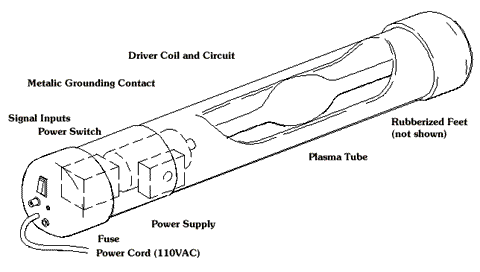
The PMR/High voltage type devices typically require a pulsed 5 volt DC signal. The PMR circuit that has been shared elsewhere in this document and on the net allows the experimenter to easily construct a usable device of this type. Although the PC speaker output (not to be confused with the sound card output) does often output a good enough signal for this use, the wave form quality does suffer greatly. This is discussed in far more detail in the chapter on Frequency Generation.
We WILL BE walking the potential experimenter thru a detailed pictorial of building a working PMR (High voltage) device in the Device Construction Chapter.
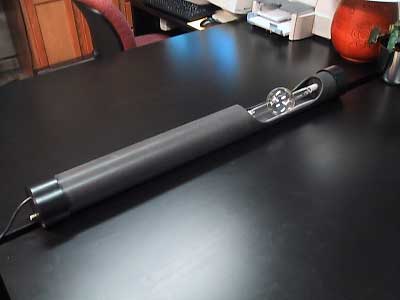
While the above unit is pretty much self-contained, most folks find it easier to combine power supply and plasma circuitry into a separate enclosure.
Shown here are the “bookshelf system and “the brick”, both often seen in website photos and discussions of my work.Desktop/Bookshelf PMR Driver “The Brick”.
 |
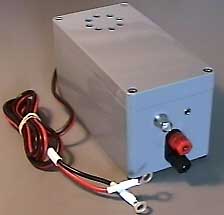 |
| Desktop/Bookshelf PMR Driver | “The Brick” |
These configurations have provisions for easy connection of an unlimited array of conventional and specialized tubes limited only by the users imagination. The only real difference in the two units is that the Desktop unit contains an internal power supply … the “brick” simply connects to a decent 12 volt power supply or battery. A simple bench test setup is shown here.
 |
|
| A very simple PMR system driving a helical coiled tube | 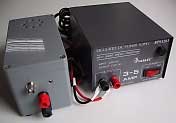 |
Here we have a few samples of tubes from my collection, Each of these tubes has been designed and gassed specifically for use in the high voltage environment and method of plasma excitation.
 |
| Single Bubble Compact E-Gas Tube |
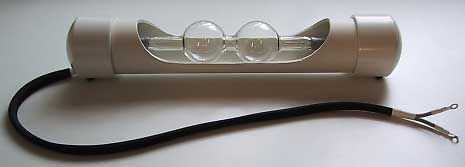 |
| Double Bubble Compact E-Gas Tube |
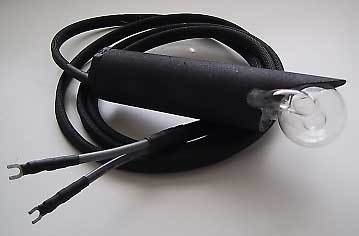 |
| Handheld E-Gas Bubble a popular and excellent choice for localized applications |
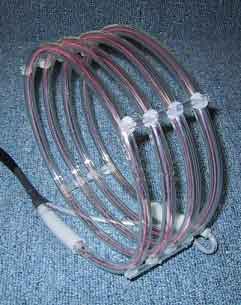 |
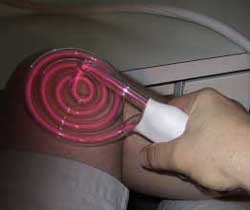 |
| Helical Coil E-Gas Tube | Handheld Spiral E-Gas Tube |
Both of these coil type tubes are some of my favorites. The coiled nature brings in additional electromagnetic components into the working environment

To this point, all tubes shown have been specifically designed for high voltage, PMR, EMEM type excitation and contain the proprietary E-Gas mix of noble gases optimized for this particular environment. These tubes are NOT made to operate in a Bare-Rife environment for reasons that will be explained in the tube area. Tubes designed for use in the Bare-Rife environment, if they contain internal electrodes, should work sufficiently in the high voltage environment
 |
| Triple Bubble Bare-Rife
Plasma Tube Being Burned In With High Voltage Excitation |
Extensive tube photos, samples, and detailed information will be found in the “Tube Type and Considerations” as well as in the “Device Construction” areas.

